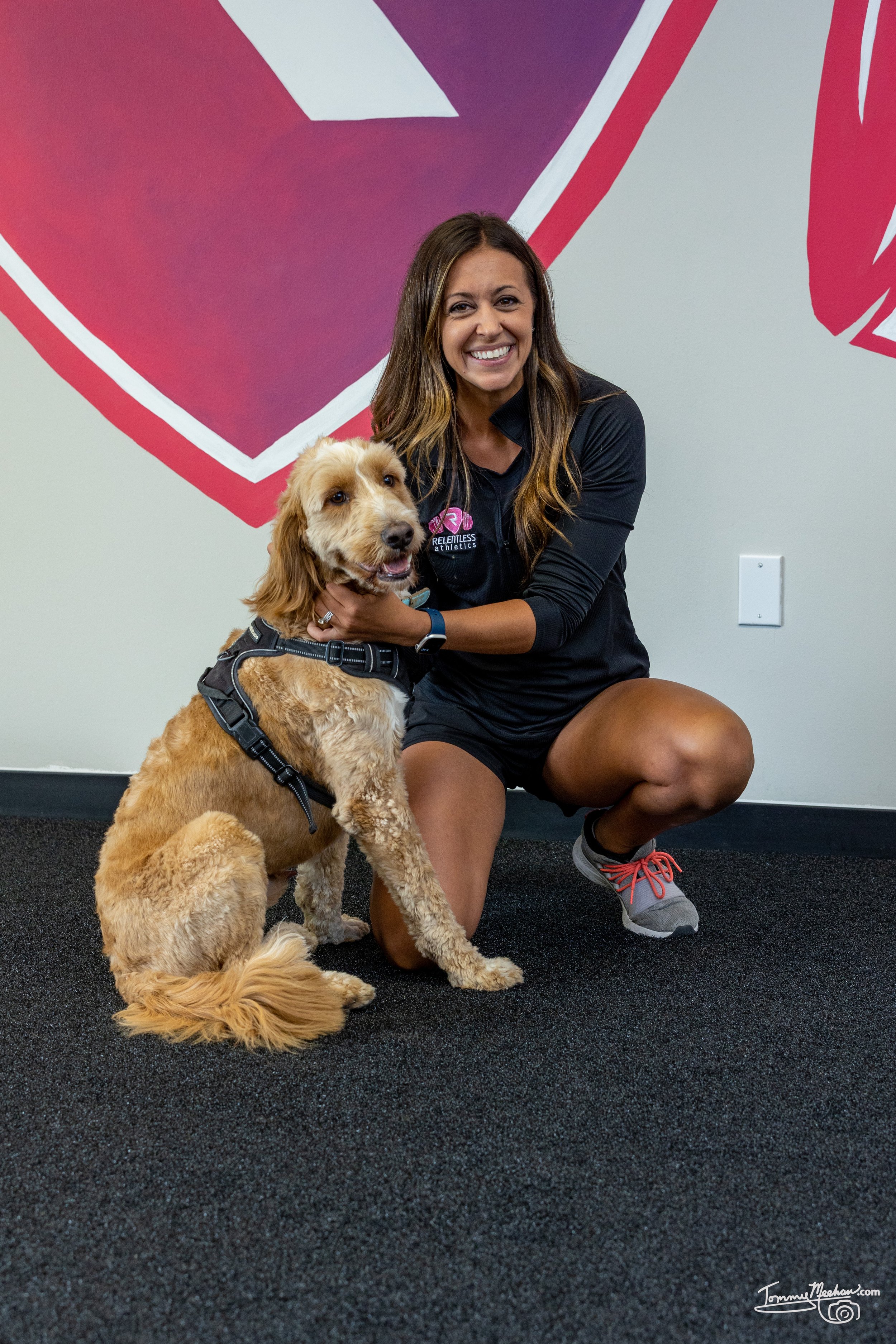The Optimal Training Frequency for Female Athletes During the Season
By Emily Neff (Pappas), Ph.D. (c)
As a parent of a female athlete, you may wonder whether strength training should continue during the competitive season, especially when schedules are packed with practices and games.
However, maintaining a consistent approach to strength training, even during the season, is critical for performance, injury prevention, and long-term success.
Even a single strength training session per week during the season can offer measurable benefits.
Here’s why this approach makes sense, backed by research, and what an effective in-season program should look like.
Injury Risk Reduction
Did you know female athletes are more prone to injuries such as anterior cruciate ligament (ACL) tears and overuse injuries due to neuromuscular and strength differences (1)?! (nope, not because of their wider hips or hormones, but because they GROW DIFFERENTLY!)
Regular in-season strength training helps maintain the neuromuscular adaptations gained in the off-season, which can reduce injury risks by enhancing muscle and joint stability.
Research highlights that programs incorporating strength and neuromuscular training can significantly reduce ACL injury risk in adolescent female athletes (2).
Focusing on movement quality, appropriate exercise selection, and intensity is crucial during the season to maintain these benefits.
PERFORMANCE MAINTENANCE
The demands of games and practices during the competitive season can lead to a decline in muscle strength and power if strength training is omitted entirely.
Studies show that in-season training helps preserve physical performance markers such as sprinting, jumping, and agility (3).
A well-structured in-season program ensures athletes maintain their physical capabilities while minimizing fatigue or interference with game-day performance.
By mirroring movements from the off-season and avoiding novelty exercises, athletes can prevent excessive soreness, which could hinder on-field performance.
.
1x/Week is Better Than 0x
When athletes stop strength training entirely, they risk detraining, which can result in lost strength and neuromuscular adaptations within weeks (4). Even a single weekly session of strength training can help maintain strength, neuromuscular efficiency, and overall preparedness.
Key advantages of 1x/week in-season training include:
Injury prevention: Maintaining muscle stability and joint integrity.
Performance preservation: Keeping strength and power intact for games and practices.
Practicality: A manageable commitment that integrates seamlessly into busy schedules.
Mental & Physical Well-being: Strength training also provides mental benefits, such as improved confidence and resilience. Maintaining a physical routine during the season can reduce fatigue and help athletes feel more in control of their performance demands (5).
What a Properly Programmed In-Season Strength Training Program Should Include
Consistent Movement Patterns
Use similar exercises from the off-season to avoid introducing new movements, which can cause soreness. Soreness can mask an athlete’s ability to play effectively. For example, if squats were a primary lower-body movement in the off-season, they should remain the focus in-season.
Lower Volume, Moderate to High Intensity
Workouts should focus on lower volume (e.g., 3-5 reps) with moderate to high intensity (e.g., 80% of 1-rep max). This approach maintains strength without overloading the athlete or creating undue fatigue.
Special Considerations for Female Athletes
Female athletes, especially in upper-body dominant sports like softball, require targeted programming for upper-body strength.
Women generally have less upper body muscle mass than men but can handle higher volumes in this region due to improved recoverability. This makes incorporating pulling movements (e.g., rows, pull-ups) with moderate volume (e.g., sets of 6 reps) beneficial for developing and maintaining strength while reducing overuse injuries.
Isometric and Tempo Work
Isometric (iso) holds or tempo exercises (e.g., slow eccentric phases) help reinforce joint stability and build strength in underutilized muscle groups. These exercises are particularly beneficial for combating overuse injuries and maintaining balanced muscle development.
Conclusion
For female athletes, an in-season strength training routine is not about pushing harder but about preserving the strength and neuromuscular adaptations developed in the off-season. A single weekly session focusing on consistent movements, appropriate intensity, and volume can improve performance, reduce injury risks, and prevent detraining. Parents play an important role in encouraging this practice to support their athlete's long-term success.
References
Myer, G. D., Ford, K. R., Palumbo, J. P., & Hewett, T. E. (2008). Neuromuscular training improves performance and lower-extremity biomechanics in female athletes. Journal of Strength and Conditioning Research, 19(1), 51-60. https://doi.org/10.1519/00124278-200502000-00009
Hewett, T. E., Ford, K. R., & Myer, G. D. (2010). Reducing knee and anterior cruciate ligament injuries among female athletes: A systematic review of neuromuscular training interventions. The Journal of Knee Surgery, 23(4), 193-200.
Ramsay, J. A., Blimkie, C. J., Smith, K., Garner, S., MacDougall, J. D., & Sale, D. G. (1990). Strength training effects in prepubescent boys. Medicine & Science in Sports & Exercise, 22(5), 605-614. https://doi.org/10.1249/00005768-199010000-00011
Mujika, I., & Padilla, S. (2000). Detraining: Loss of training-induced physiological and performance adaptations. Sports Medicine, 30(3), 145-154. https://doi.org/10.2165/00007256-200030030-00001
McGuigan, M. R., Earp, J. E., & Newton, R. U. (2008). Unilateral jump training enhances leg power, strength, and balance. Journal of Strength and Conditioning Research, 22(6), 1705-1713. https://doi.org/10.1519/JSC.0b013e3181820f9a
ABOUT THE AUTHOR
Emily is the Owner and Program Director at Relentless.
In 2015, Emily opened Relentless Athletics to build a community for female athletes while educating their parents and coaches on the necessity of strength training and sports nutrition to optimize sports performance and reduce injury risks in the female athlete population.
Emily is a Ph.D. candidate with a research focus on female athletes & the relationship between strength training, ACL injury rates, and menstrual cycle irregularities (RED-s). She holds an M.S. in Exercise Physiology from Temple University and a B.S. in Biological Sciences from Drexel University.
Through this education, Emily values her ability to coach athletes and develop strength coaches, using a perspective grounded in biochemistry and human physiology.
When she isn’t on the coaching floor or working in her office, she is at home with her husband Jarrod and their daughter Maya Rose, and, of course, their dog Milo (who has become the mascot of Relentless)!!














